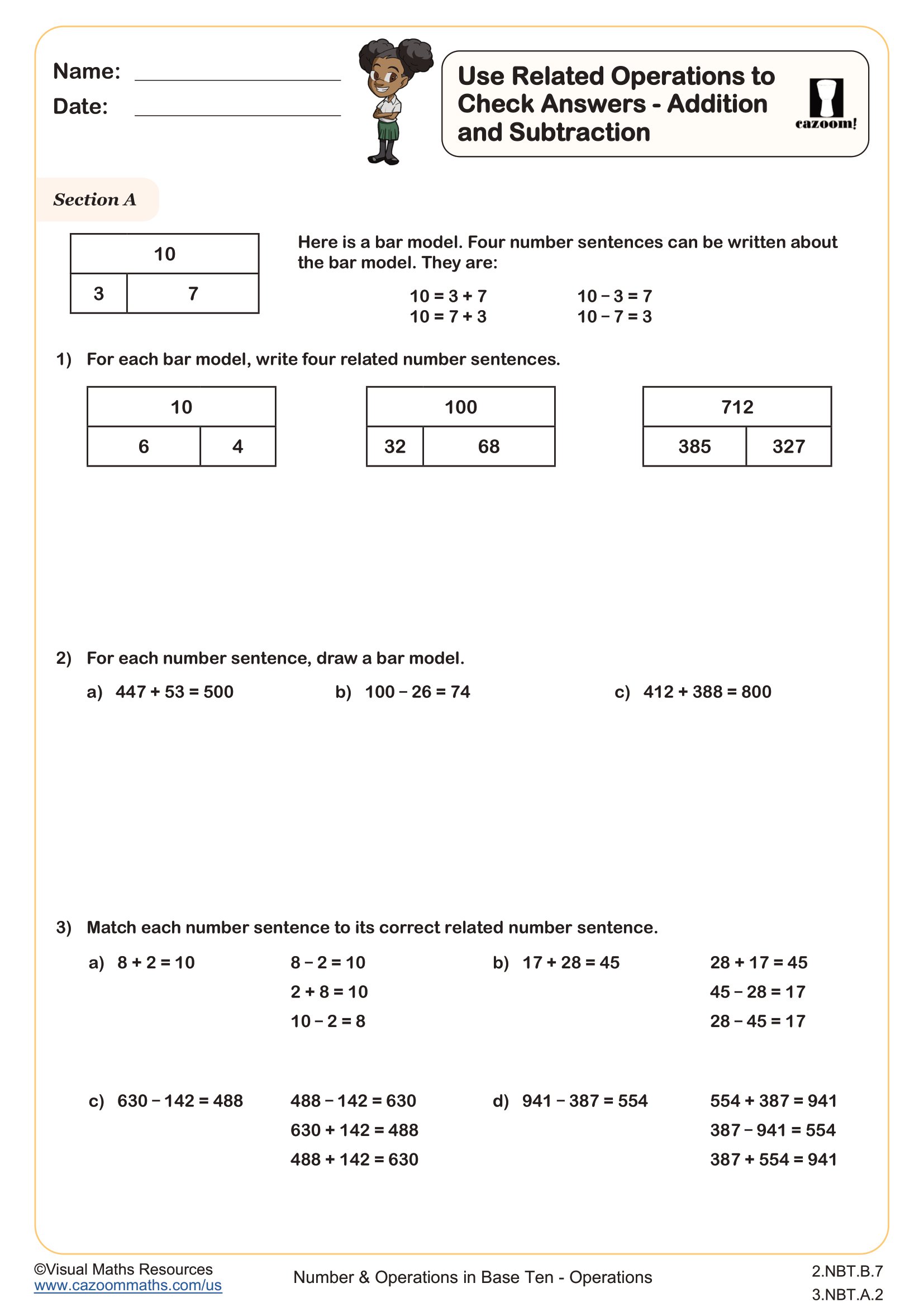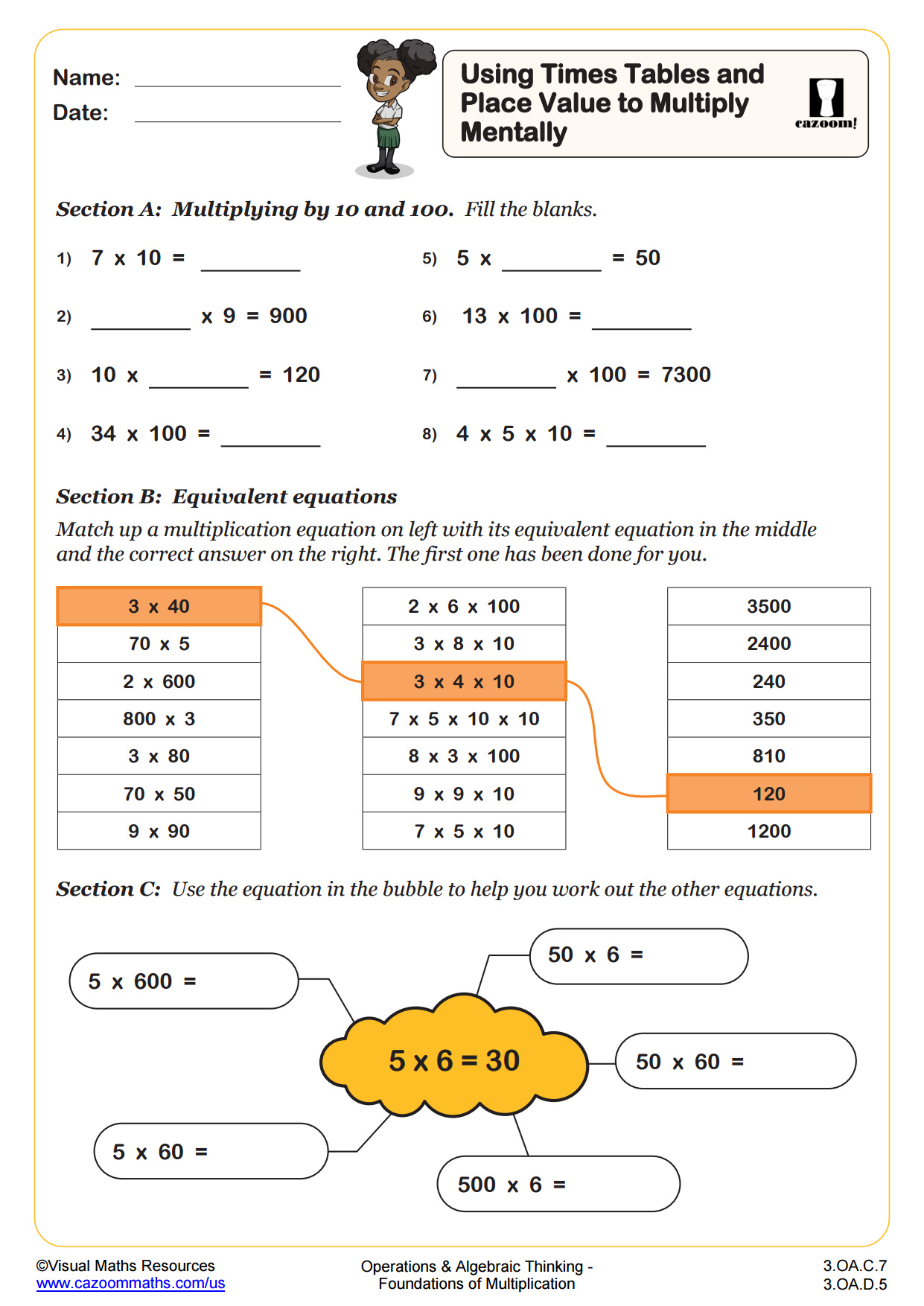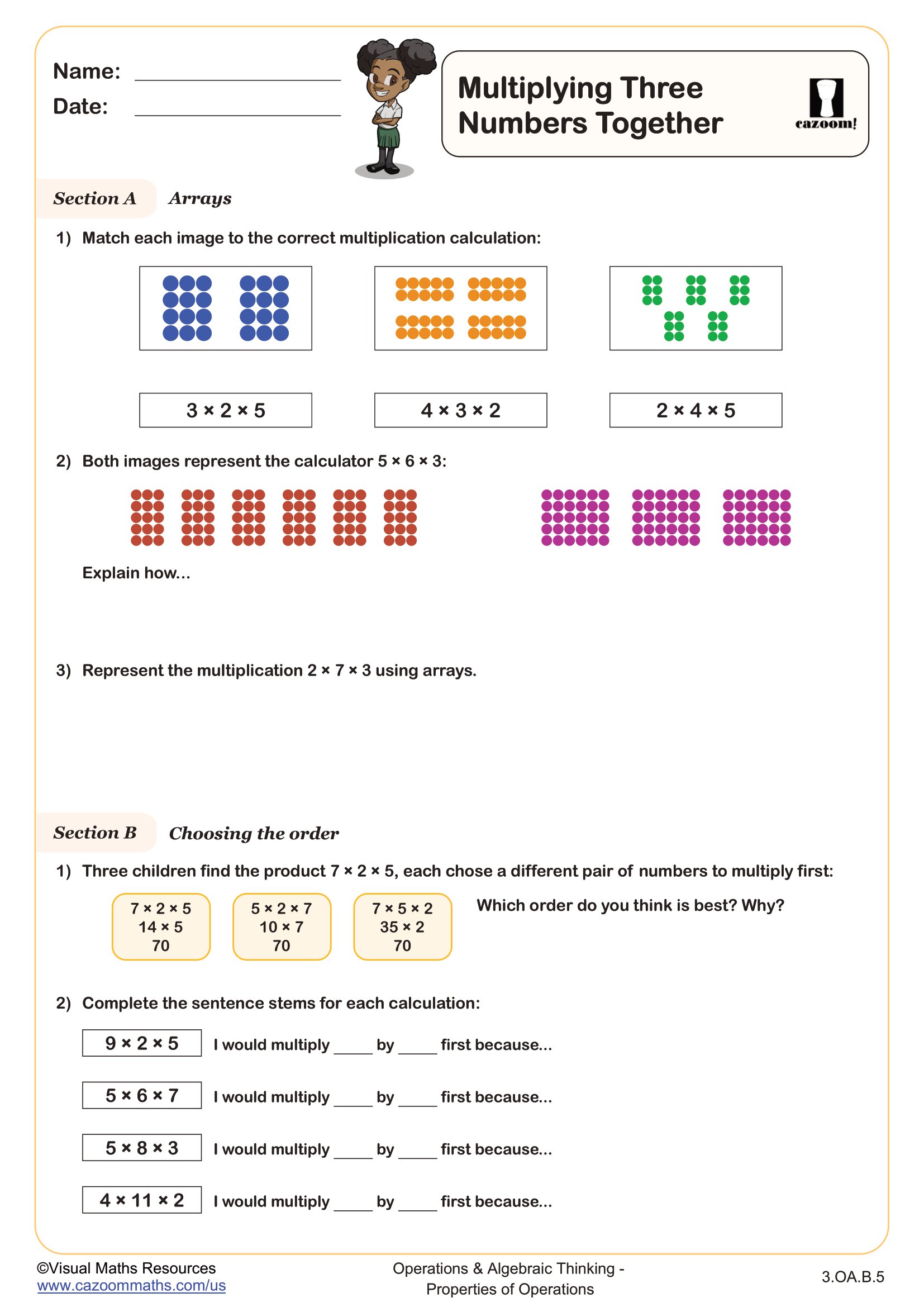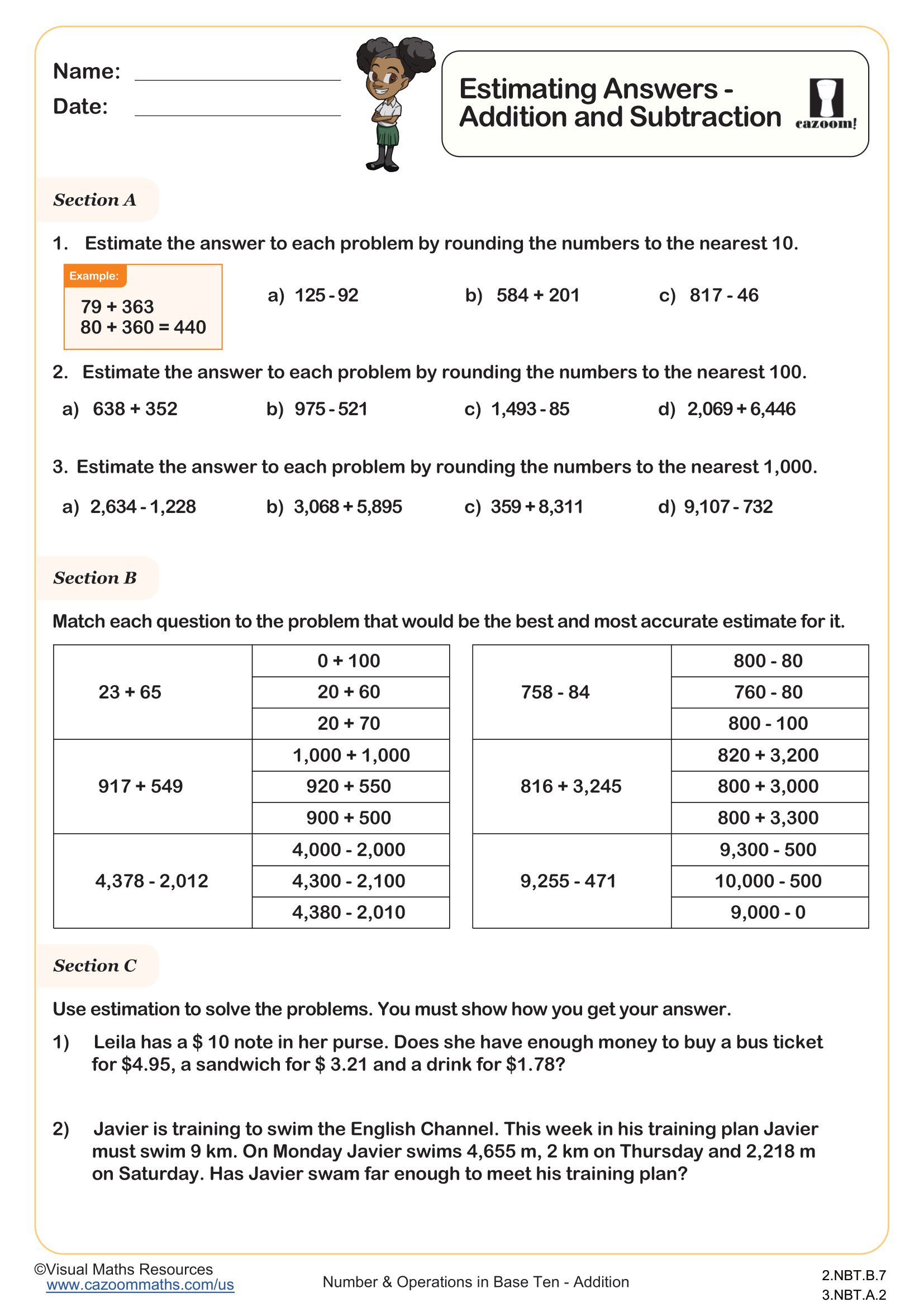Loading...
Back to:
Using Inverses to Check Answers - Multiplication and Division WORKSHEET
Suitable for Grades: 3rd Grade
CCSS: 3.OA.A.4, 3.OA.B.5
CCSS Description: Determine the unknown whole number in a multiplication or division equation relating three whole numbers. For example, determine the unknown number that makes the equation true in each of the equations 8 × ? = 48, 5 = � ÷ 3, 6 × 6 = ?.
Apply properties of operations as strategies to multiply and divide.2 Examples: If 6 × 4 = 24 is known, then 4 × 6 = 24 is also known. (Commutative property of multiplication.) 3 × 5 × 2 can be found by 3 × 5 = 15, then 15 × 2 = 30, or by 5 × 2 = 10, then 3 × 10 = 30. (Associative property of multiplication.) Knowing that 8 × 5 = 40 and 8 × 2 = 16, one can find 8 × 7 as 8 × (5 + 2) = (8 × 5) + (8 × 2) = 40 + 16 = 56. (Distributive property.)
Apply properties of operations as strategies to multiply and divide.2 Examples: If 6 × 4 = 24 is known, then 4 × 6 = 24 is also known. (Commutative property of multiplication.) 3 × 5 × 2 can be found by 3 × 5 = 15, then 15 × 2 = 30, or by 5 × 2 = 10, then 3 × 10 = 30. (Associative property of multiplication.) Knowing that 8 × 5 = 40 and 8 × 2 = 16, one can find 8 × 7 as 8 × (5 + 2) = (8 × 5) + (8 × 2) = 40 + 16 = 56. (Distributive property.)
Using Inverses to Check Answers - Multiplication and Division WORKSHEET DESCRIPTION
This worksheet will give your learners opportunity to practice their preferred methods for multiplication and division while using inverse operations to either check answers to calculations or solve missing number problems.
Students are reminded of the multiplication and division fact families in section A and introduced to inverse calculations.
In section B students will put this knowledge to use across three different questions.
The calculations students will complete are 3 digits divided by a single digit or 2 digits multiplied by a single digit.




